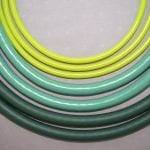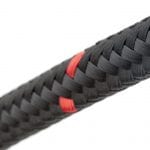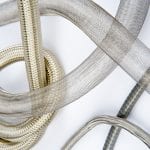In 1985, for the first time, a robot was used to assist in a surgical procedure on a human. A trail-blazing, adventurous team had modified an industrial robot that guided a needle in a brain biopsy procedure. Since then the rate of new technological advancements has done nothing but accelerate. That fast pace is reflected in what has made robot assisted surgery a hot new trend that promises to revolutionize medicine in coming years.

A Brief History
That ground-breaking 1980s effort eventually led to development of the Neuromate surgical robot. It received FDA approval in 1999 for use in brain surgery. It was primarily used for stereotactic surgery where prior CT or MRI imaging is used to locate a tumor and a minimally damaging path through the brain to reach the tumor. Manipulation of the surgical tools remained under control of the surgeon.
In 1992 another surgical robot, Robodoc, was introduced in Europe. It has participated in more than 5,000 hip replacement surgeries, providing help in coring out the femoral shaft to accommodate the necessary prosthesis.
In succeeding years robotics found use in telesurgery—where the doctor performs surgery on a patient even though they are not in the same physical location—and especially in laparoscopic surgery. Also known as minimally invasive surgery, laparoscopic surgery uses a video camera and several thin surgical instruments. Small incisions usually one-half inch or less are made, then plastic tubes are placed through the incisions to reach the area of interest. The camera and instruments are passed through the tubes, called “ports,” giving the surgeon access to the inside of the patient.
Today, surgical robotics have caused a fundamental shift in the practice of medicine. The market-leading surgical robot, the da Vinci system manufactured by Intuitive Surgical, Inc., provides innovative surgical robotics across cardiac, thoracic, urology, gynecologic, colorectal, pediatric and general surgical disciplines.
The ever accelerating growth in surgical robotics is guided by a number of factors.
— Micro-motors that drive the surgical tools grow smaller, more powerful and offer surgeons up to ten degrees of freedom even while operating in tight spaces.
— Advances in medical imaging now include small, high performance cameras that image three dimensional, high definition video showing internal organs in natural color.
— Haptic feedback gives surgeons a tactile sensation to better control the robotic system, and has led to increased acceptance of robotic surgery.
— Patients and surgeons across the board have become more comfortable with the concept of robotic-assisted surgery.
Along with these advances robots become capable of new functionality, and the definition of “robot” has continued to evolve. Keith Dinwiddie in his book Basic Robotics offers this definition, which seems to summarize today’s technology nicely:
“A machine equipped with various data-gathering devices, processing equipment, and tools for operation flexibility and interaction with the systems environment, which is capable of carrying out complex actions under either programmed control or direct manual control.”
The Hidden Components
However, while advanced imaging systems, their ability to use CT and MRI data, and the sheer electro-mechanical elegance of design may be the most visible part of a medical robot’s design, the small and hidden internal components are what give the surgeon the dexterity they need to perform complex surgeries. For instance, in early medical robot design surgeons had no haptic feedback. Doctors couldn’t tell how much force they used in suturing a wound or how much pressure they placed on an organ with a surgical tool.
Solving the haptic feedback problem required a great deal of design work using linear DC servo motors and micro-motors to control movement of the surgical tools. Such motors, from companies like MicroMo and Faulhaber, are extremely small yet can deliver substantial force. For example, brushless DC servo-motors come in diameters of only 16 mm and produce 2.6 nMm (Newton-millimeters) continuous torque. Others include integrated magnetic encoders and gear reducers. They run on 24 volts and have a free speed of 9000 RPM and stall torque of 12 nMm. These motors give the surgical tools motion when the surgeon manipulates the hand controls.
Motor control electronics drive these servo, linear and micro-motors under software control. Kinematics controllers, position sensing, force sensing and strain gauges complete the haptic feedback system, which gives today’s surgeons the tactile sensory information they need to operate without physically touching the patient.
As well, the endoscopic components used to introduce an LED-lighted camera and tiny surgical tools into the patient are another crucial but largely hidden component in surgical robot design. Custom braid reinforced tubing, thin wall tubing, fluoropolymer lined catheter shafts and hybrid tubing allow the surgeon to place a camera and surgical tools accurately with minimal invasiveness.
Similarly, electrical cabling that delivers power and signals to the many components of a surgical robotic system is a key component. Coaxial cable and twisted pair cabling carry video and both digital and analog data between the active components of the robot and its control circuitry. These cabling systems are used to connect motors, sensors and other components. They are highly specialized and must meet rigorous specifications regarding impedance, signal attenuation and skew— the difference in propagation delay between the fastest and slowest set of wires in a twisted pair.
At New England Wire Technologies, and our subsidiary New England Tubing Technologies, we specialize in such power and signal cabling systems, as well as custom reinforced, thin wall tubing and eTubing® hybrid tubing configurations.
Conclusion
Surgical robots today give surgeons the dexterity, accuracy and deftness the human hand cannot duplicate. Patients undergoing robotic surgery spend less time in the hospital, are discharged earlier and suffer less pain than patients treated with open surgery. As technological advances continue to accelerate and bring new solutions to market, surgical robots will benefit and continue to become more elaborate and give surgeons greater capability.
Two resources that discuss the evolution of medical robotics and the trends in today’s 21st century marketplace are available online and may be of interest to those who’d like to learn more.
“Medical Robots: Current Systems and Research Directions” by Ryan Beasley of Texas A&M University reviews current developments and is well illustrated throughout.
“How the Future of Surgery is Changing: Robotics, telesurgery, surgical simulators and other advanced technologies” by Richard M. Satava, MD with Washington Medical Center reviews the state of the art in medical robotics.
Custom Design

About Our Engineers
Innovative solutions start with an experienced team of engineers, armed with the latest design tools and technology. Our focus on understanding the individual, complex challenges of our customers and designing solutions that fit, is why we have been trusted as the industry leader for over 100 years.


















